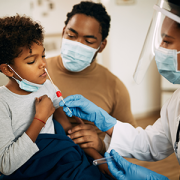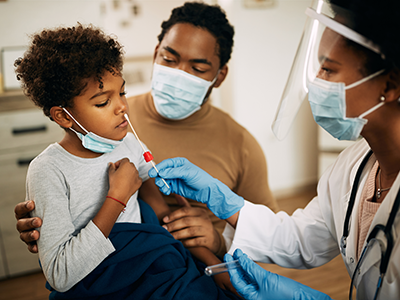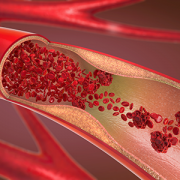
Adults living with HIV in Washington, D.C., were more likely to feel higher levels of emotional and physical well-being if they attended religious services regularly, prayed daily, felt “God’s presence,” and self-identified as religious or spiritual.
Adults living with HIV in Washington, D.C., were more likely to feel higher levels of emotional and physical well-being if they attended religious services regularly, prayed daily, felt “God’s presence,” and self-identified as religious or spiritual, according to research published online Jan. 29, 2020, in Psychology of Religion and Spirituality. By contrast, patients living with HIV who had the lowest levels of quality of life and more mental health challenges were privately religious, potentially eschewing organized religion due to fears about being stigmatized or ostracized.
“These findings are significant because they point to the untapped potential of encouraging patients living with HIV who are already religious to attend religious services regularly. Scientific evidence suggests that religions that present God as all-powerful, personal, responsive, loving, just and forgiving make a difference in health-related quality of life. By contrast, belief systems and religions that see God as punishing, angry, vengeful and distant and isolate members from their families and the larger community do not have health benefits or contribute to health-related quality of life. People who identify as spiritual also benefit from improved overall health-related quality of life,” says Maureen E. Lyon, Ph.D., FABPP, a clinical health psychologist at Children’s National Hospital, and senior study author.
“In general, patients living with HIV have reported that they wished their health care providers acknowledged their religious beliefs and spiritual struggles. Additional research is needed to gauge whether developing faith-based interventions or routine referrals to faith-based programs that welcome racial and sexual minorities improve satisfaction with treatment and health outcomes,” Lyon adds.
More than 1 million people in the U.S. live with HIV, and in 2018, 37,832 people received an HIV diagnosis in the U.S., according to the Centers for Disease Control and Prevention (CDC). In 2017, the Washington, D.C., region recorded one of nation’s highest rates of new cases of HIV: 46.3 diagnoses per 100,000 people, according to the CDC.
A research team that includes current and former Children’s National faculty wanted to learn more about the degree of religiousness and spirituality reported by people living with HIV and the interplay between religion and health-related quality of life. They recruited patients to participate in a clinical trial about family-centered advance care planning and enrolled 223 patient/family dyads in this study.
Fifty-six percent of patients were male. Eighty-six percent were African American, and their mean age was 50.8. Seventy-five percent were Christian.
The researchers identified three distinct classes of religious beliefs:
- Class 1, the highest level of religiousness/spirituality, applied to people more likely to attend religious services in person each week, to pray daily, to “feel God’s presence” and to self-identify as religious and spiritual. Thirty-five percent of study participants were Class 1 and tended to be older than 40.
- Class 2 applied to privately religious people who engaged in religious activities at home, like praying, and did not attend services regularly. Forty-seven percent of study participants were Class 2.
- Class 3 participants self-identified as spiritual but were not involved in organized religion. Nearly 18 percent of study participants were Class 3, the lowest overall level of religiousness/spirituality.
Class 1 religiousness/spirituality was associated with increased quality of life, mental health and improved health status.
“Being committed to a welcoming religious group provides social support, a sense of identity and a way to cope with stress experienced by people living with HIV,” Lyon says. “We encourage clinicians to capitalize on patients’ spiritual beliefs that improve health – such as prayer, meditation, reading spiritual texts and attending community events – by including them in holistic treatment programs in a non-judgmental way.”
What’s more, the research team encourages clinicians to appoint a member of the team who is responsible for handling religiousness/spirituality screening and providing referrals to welcoming hospital-based chaplaincy programs or community-based religious groups.
“This is particularly challenging for HIV-positive African American men who have sex with men, as this group faces discrimination related to race and sexual orientation. Because HIV infection rates are increasing for this group, this additional outreach is all the more important,” she adds.
In addition to Lyon, study co-authors include Biostatistician Jichuan Wang, Ph.D., and Yao I. Cheng, MS., both of Children’s National; and Lead Author Katherine B. Grill, Ph.D., the former clinical coordinator for this randomized clinical trial who is currently an adjunct professor at the California Institute of Integral Studies.
Financial support for research described in this post was provided by the National Institutes of Health under award Nos. R01NR014-052-05 and UL1RR031988.















